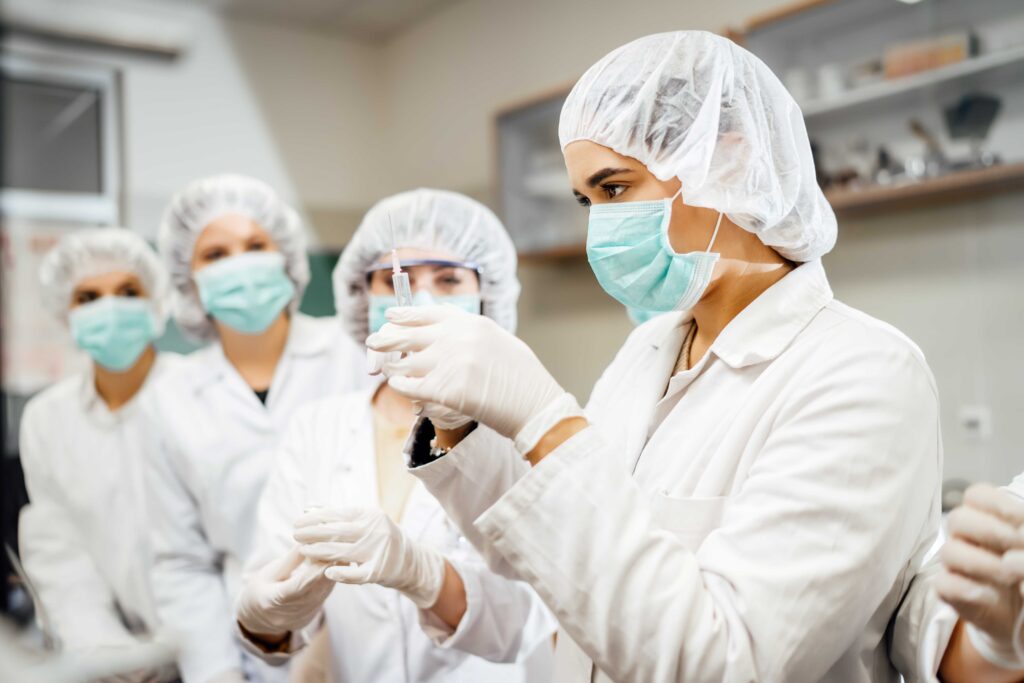A Message on COVID-19 from WorkSTEPS Chief Medical Officer, Dr. Ben Hoffman
RTW – Sarah Wants To, Joe Doesn’t. Both are a Challenge
Sarah is 52 and has recently learned that she has been cancer free for six months. She is still on medications that compromise her immune system. Her experience has taught her that she not only loves her work; she needs to work. It provides a welcome distraction from health worries and contact with coworkers and customers who she counts among her best friends.
Joe is a 43-year-old father with joint custody of his two children. Life is complicated, especially since the kids are having to learn from home. As a field engineer, Joe’s job requires that he be present at the company or customer worksite most days. Joe has a doctor’s note saying he can’t return to work.
As companies return more employees to work, these scenarios will become more common. It is important for companies to establish programs and procedures to address them.
Three Factors
RTW scenarios like those above represent a mix of three basic factors:
- 1. How safe is the work environment/job function? This is the factor over which employers have the most control. The better an employer does at implementing a robust COVID-19 prevention strategy (including a focus on ventilation), the greater the number of employees who will be able to return safely and confidently to work.
- 2. What is the employee’s risk of serious illness resulting from COVID-19 infection? No matter how robust the prevention strategy, companies can’t reduce the risk of infection to zero. Further, some jobs simply expose workers to more risk than others. So, it can be dangerous for people at high risk for serious complications from COVID-19 to work.
- 3. What is the employee’s attitude/desire to return to work? For a wide range of personal reasons and motivations, some people are eager to return to work, even if it means risking serious illness (like Sarah), while others are reluctant to return to work (like Joe).
Managing Sarah and Joe
Managing Joe is similar to having a fit for duty process in place to make a return-to-work determination following a workers’ comp or disability claim. For COVID-19, employers should consider engaging a trusted partner to implement a clinical review process that assesses employee health risk vs. COVID-19 exposure risk at the worksite/of the job to make a RTW recommendation.
A couple of articles provide insight into the assessment framework. This article describes a framework for evaluating health risk by considering a range of health and demographic factors to determine a “COVID-Age.” This document includes a framework (p. 37) an employer might use in collaboration with their clinical review partner to assess virus exposure risk in a workplace and job role. Combined, these sorts of frameworks can provide a consistent approach to making RTW recommendations for people like Joe.
Sarah is in some ways the bigger challenge because by law employers cannot prohibit employees from coming to work. Further, even if a person’s health situation is common knowledge around the office, health information privacy prohibits employers from singling out individual employees for a clinical consult.
So, what can you do? I recommend a strategy consisting of three tactics:
- 1. Educate employees about risk factors for severe COVID-19 disease.
- 2. Offer to work with employees who are concerned about their health, finding ways to further reduce their exposure risk by: moving their workspace, enabling more work-from-home duties, providing additional barriers around their work area; etc.
- 3. Offer concerned employees the opportunity to engage in a clinical consult (same as Joe above), where a health professional can review their health risk vs. their exposure risk, make a well-reasoned recommendation and educate the employee about their risks and measures they can take to reduce their risk.
Thankfully, most employees won’t present a Sarah or Joe scenario. Particularly if you have a strong prevention strategy in place, most – even if reluctant at first – will come to regard the workplace as among the places they feel most safe.
But there will be employees at the margins who need special handling. Having structured and consistent procedures for managing the special cases will not only improve the efficiency and effectiveness of the process but will help instill confidence among employees in its fairness.
Is there an issue you’re struggling with that you’d like to see us address in this newsletter? Click here and tell us about it.
Ben Hoffman, MD, MPH
Chief Medical Officer, WorkSTEPS
For more from Dr. Hoffman, connect with him on LinkedIn.
P.S. WorkSTEPS is hosting a series of informational webinars, each focused on a unique Covid-19 business challenge. Click here for more information and to register for the following:

Medical
Globally: Over the weekend, worldwide COVID-19 cases exceeded 25 million. Currently, much of the increase is driven by steady increases in Americas countries and India. On Sunday, India reported 79,457 cases, the biggest 1-day rise of any country during the pandemic. The US held the previous record, which occurred on Jul 17.
Nationally: The surge in COVID-19 cases that occurred this summer is subsiding in Texas, California, and Arizona. At least 26 other states, including Alabama, Missouri, Iowa, Michigan, North Carolina, and the Dakotas, are seeing 7-day averages of new cases rise by more than 5%.
First US case of confirmed reinfection: On Friday, Nevada researchers have confirmed the first US case of COVID-19 reinfection involving a 25-year-old patient. The patient was first infected in April, and 48 days later tested positive after two negative tests following the first infection. The viral genomes of the first and second infections showed variability indicating the two infections were independent of each other.
Sex differences in Covid-19 antibodies: Researchers published a research letter on concentrations of antibodies against COVID-19. Antibodies begin to decline 4 to 5 weeks after diagnosis in 159 patients who recovered from COVID-19. According to a study by Swiss researchers, men show a significantly stronger immune response than women—which could account for the poorer outcomes seen in men. After COVID-19 infection, the immune system seems to produce different amounts of IgG and IgA in women and men, possibly helping to explain the higher risk of adverse COVID outcome in men through a stronger (inflammatory) response. If confirmed on other cohorts, these observations should be considered when assessing the efficacy and safety of novel vaccine candidates against COVID-19.
Antigen testing: Last week, the FDA also issued an EUA for the first antigen test BinaxNOW COVID-19 Ag Card by Abbott Diagnostics Scarborough. The results of this antigen test can be read directly from the testing card in 15 minutes. This test could be used at doctor’s offices, ERs or schools within seven days of symptom onset. Abbott plans to make up to 50 million tests available monthly in the US in October 2020. Antigen tests are very specific, but not as sensitive as molecular (PCR) tests. Thus, negative results from an antigen test may need to be confirmed with a molecular test prior to making treatment decisions. Negative results from an antigen test should be considered in the context of clinical observations, patient history and epidemiological information.
New CDC study identifies a unique aerobiology characteristic of SARS-CoV-2; 16 hours of virus viability in aerosol droplets: The CDC study aerosolized severe acute respiratory syndrome coronavirus 2 and determined that its dynamic aerosol efficiency surpassed those of severe acute respiratory syndrome coronavirus and Middle East respiratory syndrome. Although they performed experiment only once across several laboratories, their findings suggest retained infectivity and virion integrity for up to 16 hours in respirable-sized aerosols.
Masks in public restrooms: there’s increasing evidence that flushing toilets can release inhalable coronavirus particles into the air. Virus particles can be found in a person’s urine or stool and flushing can generate upward flow of inhalable particles that aerosolize into the air. Researchers simulated urinal flushing using computer models and estimated that, within just five seconds of flushing, virus particles could reach a height of more than 2 feet off the ground and could potentially contaminate other surfaces. Aerosolization from previous bathroom users may be inhaled.
Mitigation / Suppression
The National Academies of Sciences, Engineering, and Medicine yesterday issued recommendations for public health agencies to think through which groups ought to be the priority for a COVID-19 vaccine when one becomes available.
Vaccine race: As of Tuesday, the US has three COVID-19 vaccine candidates in phase 3 trials. AstraZeneca launched the final stage of a trial of its vaccine candidate, which it plans to test in 30,000 healthy adults. The AstraZeneca vaccine, developed at Oxford University, is already in a phase 3 trial in the UK. In addition to the AstraZeneca vaccine, Moderna’s vaccine candidate is already in phase 3 trials in the US, as is Pfizer and BioNTech’s.
US cell phone data may predict growth rate: A study published Monday, showed that US counties with large declines in cell phone activity at workplaces, transit stations, and stores and concurrent increases in home activity during COVID-19 lockdowns had lower rates of coronavirus infections 5, 10, and 15 days later. The researchers made 22,124 to 83,745 daily observations of cell phone location data from 949 to 2,740 counties, from Jan 22 to May 11 and compared them with COVID-19 growth rates. Counties with the least decline in workplace, transit station, and retail activity and the least increase in time spent at the residence had a higher percentage growth in cases. Counties in the highest quartile of retail activity had a 44% higher growth rate at 15 days compared with those in the lowest quartile. Greater residential activity was associated with lower growth rates. Using county-level cell phone location data may aid in assessing activities that may warn predict increases or decreases in COVID-19 cases.
Corporate
New CDC study identifies a unique aerobiology characteristic of SARS-CoV-2; 16 hours of virus viability in aerosol droplets: The CDC study aerosolized severe acute respiratory syndrome coronavirus 2 and determined that its dynamic aerosol efficiency surpassed those of severe acute respiratory syndrome coronavirus and Middle East respiratory syndrome. Although they performed experiment only once across several laboratories, their findings suggest retained infectivity and virion integrity for up to 16 hours in respirable-sized aerosols.
More data support aerosol transmission: Two studies published last week in highlighted the role of airborne spread of COVID-19 and the importance of efficient ventilation. One study found that patients can exhale millions of viral RNA particles per hour in the early stages of disease. The viral RNA breath emission rate was highest in the first stages of disease. Among the 242 surface swabs, viral RNA was found most often on toilet bowls (16.7%); floors (12.5%); patient hands, pillowcases, mobile phones, and computer keyboards (4.0%); and surfaces that healthcare staff touched (2.6%). The authors said that the viral RNA breath emission rate appears to vary based on patient activity level and disease stage. The findings support previous studies that concluded that COVID-19 is mostly likely spread by aerosols rather than large respiratory droplets or contaminated surfaces.
Stale indoor air: The second study tied an outbreak affecting a nursing home. Researchers documented an outbreak that sickened residents and staff in one of seven wards. None of the residents or staff in the other six wards tested positive. To prevent coronavirus transmission, all healthcare workers were assigned to specific wards and masks mandatory. Investigators found that an energy-efficient system had been installed where indoor air was refreshed only when indoor CO2 sensors detected elevated levels. If CO2 levels didn’t exceed a threshold, unfiltered indoor air was simply recirculated throughout the ward. In contrast, the six unaffected wards were refreshed regularly with outside air. The researchers noted that stale air in the affected ward was recirculated in the shared living areas – this contributed to the outbreak. The warned of the hazards of airborne COVID-19 transmission in poorly ventilated environments.
American Society of Heating, Refrigerating and Air-Conditioning Engineers (ASHRAE) has released two position statements and made recommendations regarding optimal air handling during the COVID-19 Pandemic. Their information and guidance may be found here.
The Work From Home WorkSTEPS Medical Team:

Ben Hoffman, MD, MPH
Chief Medical Officer

Tony Nigliazzo, MD
Medical Director

Loraine Kanyare, MSN, MPH, RN
Director of Case Management

Robert L. Levitin, MD
Physician Consultant

Lynda Phillips, LVN
Nurse Case Manager

Codey Church, LVN
Nurse Case Manager

Kerry Womack, LVN
Nurse Case Manager

Chuck Reynolds
Strategic Communications Consultant
This Guidance (“Guidance”) is provided for informational and educational purposes only. It is not intended as Legal Advice or Medical Advice. Adherence to any recommendations included in this Guidance will not ensure successful diagnosis or treatment in every situation. Furthermore, the recommendations contained in this Guidance should not be interpreted as setting a standard of care or be deemed inclusive of all proper methods of care nor exclusive of other methods of care reasonably directed to obtaining the same results. The ultimate judgment regarding the propriety of any specific therapy must be made by the physician and the patient in light of all the circumstances presented by the individual patient, and the known variability and biological behavior of the medical condition. Similarly, this Guidance is based on current advice, comments, and guidance from the EEOC, CDC and the CMS made publicly available. The ultimate judgement regarding the propriety of any specific employment action must be made by the company and attorney in light of all of the circumstances presented by the company, state and federal rules existing at the time and the then current state of the National Pandemic. This Guidance and its conclusions and recommendations reflect the best available information at the time the Guidance was prepared. The results of future studies or changes in rules, regulations or laws may require revisions to the recommendations in this Guidance to reflect new data. WorkSTEPS does not warrant the accuracy or completeness of the Guidance and assumes no responsibility for any injury or damage to persons or property arising out of or related to any use of this Guidance or for any errors or omissions.




